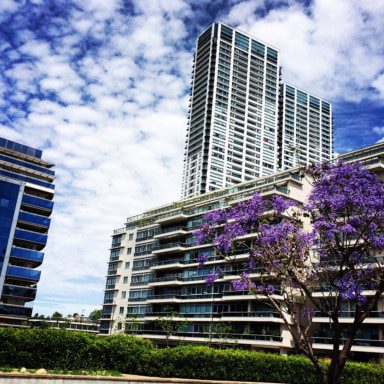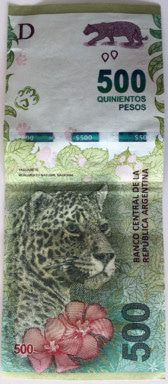Still some restaurants, kioskos, and tango shops prefer cash, be it through not accepting Credit Cards or through letting you pay a 10% surcharge for card payments. Or through giving you 10-25% off if you pay cash ("en efectico"). This means: you better get Argentine pesos. So how can you get your pesos?
As far as I know, it is now theoreticly possible to exchange money in Europe into pesos, but due to the high inflation rate many banks do not store any pesos in cash. So I still recommend to bring cash in US Dollar or Euro and/or a VISA or Mastercard if it allows you to withdraw at ATM at no extra cost back home. Make sure to get proper information from customs about the amount of cash you are allowed to bring. My latest information is that you can bring up to 10.000 US Dollar in cash into Argentina without notice.
For money exchange you can go to BNA (
Banco de la Nación Argentina, BNA) as well as to Banco Columbia. BNA has different branches throughout the city, but not all of them (!!) do exchange money. The branch on Santa Fe e.g. only accepted US Dollars from one friend, but let another friend exchange unlimited amounts of Euros. I'm sorry to say it, but this is Argentina .... The headquarters of BNA in Microcentro and the branch on Cordoba (Palermo) accepts Euros to exchange.
If you found a branch who accepts your cash, you can at least change up to 400€ per day and will need to bring a valid passport. Opening hours are Monday till Friday 10:00-15:00 h. You have to take a number, and - at least for the Cordoba branch - you can calculate 1-2 minutes per number. Thus if you have a line of 30 numbers to wait you can go for 45 minutes to have a coffee and come back just in time to catch your slot. It is not allowed to use your phone while waiting in the bank, so bring a book if you want to wait there.
Other banks with lots of branches (like Banco de la ciudad) exchange Euro or US $ only if you are a regular customer of the bank with an account there. International ones like HSBC I need to check in the next weeks.
As of today (16th of November 2016) the rate at BNA was 17,18 pesos for 1 Euro, while the blue market rates are 15,5 - 16,5 pesos for 1 Euro.
(Info: Blue market exchange offices have been semi-legal offices throughout the whole city, many located on Calle Florida. As long as the financial markets in Argentina were closed off from the rest of the world and the official exchange rate was kept artificially low, these places gave tourists the chance to get more pesos for their Euro/US Dollar. If they will continue to exist depends highly on politics and the future activities of Argentine banks).
My Visa card so far did not work on a couple ATM's I've tried (like Banco de la Ciudad). But mainly the international banks (e.g. BBVA Francés, HSBC, Banco Santander Rio, Citibank, Banco de Columbia) have ATM's that accept European / American credit cards. Watch out for e white "EB" sign on red ground. You can withdraw 2.400 pesos twice a day, so maximum 4.800, but fees are 91-95 pesos per withdrawal. Count in your costs at your bank at home, and see which way you can get your money the cheapest and most comfortable.

